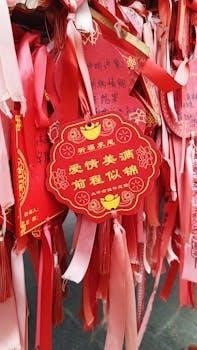Adinkra symbols are visual representations originating from Ghana, West Africa. These symbols, created by the Asante people, carry deep philosophical and cultural meaning. They are used to communicate ideas, concepts, and proverbs. Frequently seen on cloth, walls, and logos, Adinkra symbols are integral to Akan culture.

Origins and History of Adinkra Symbols
Adinkra symbols originated with the Asante people of Ghana and Côte d’Ivoire. Historically, they were printed on cloth worn by royals for important ceremonies. The symbols are tied to Asante history, beliefs, and traditions. They have gained global prominence and can be found in various forms of art and design.
The Asante People and Adinkra
The Asante (or Ashanti) people, residing in modern-day Ghana, are the originators of Adinkra symbols. These symbols hold significant cultural and historical importance within the Asante tribe. The Asante people traditionally printed Adinkra symbols on cloth, pottery, and metalwork, using them as a form of visual communication and storytelling.
Adinkra cloth was traditionally worn by royalty and spiritual leaders of the Asante; Each symbol represents simple concepts, allowing knowledgeable individuals to interpret the patterns as stories about the wearer. The symbols reflect the beliefs, traditions, and philosophy deeply embedded in Asante society.
The Asante people fiercely resisted British colonial rule in West Africa, and their cultural heritage, including Adinkra symbols, became a way to preserve their identity. Even today, Adinkra symbols remain ubiquitous in Ghana, appearing on cloth, walls, pottery, and logos, serving as a testament to the enduring legacy of the Asante people.
The widespread use of Adinkra demonstrates the prestige associated with Asante culture and its continued relevance in modern West Africa.
Meaning and Significance of Adinkra Symbols
Adinkra symbols are more than mere decorations; they are visual representations of concepts and proverbs. Each symbol holds a specific meaning tied to Akan philosophy and culture. They communicate deep truths, reflecting the rich heritage and wisdom of West Africa.
Adinkra as a Form of Communication
Adinkra symbols serve as a sophisticated system of visual communication, deeply embedded within Akan society. More than just decorative elements, they function as a language, conveying complex ideas and proverbs through concise graphic forms. This visual language transcends spoken words, enabling the transmission of cultural values and historical narratives.
The symbols are often printed on cloth, pottery, and other mediums, allowing individuals to “read” the messages embedded within the designs. Knowledge of Adinkra symbols empowers one to interpret the underlying meanings and gain insights into the wearer’s status, beliefs, or intentions. This form of communication is particularly evident in traditional ceremonies and social gatherings, where Adinkra cloth serves as a visual declaration of identity and affiliation.
The use of Adinkra promotes cultural cohesion and understanding. They bridge communication gaps, reinforce shared values, and preserve the collective memory of the Akan people. Their enduring presence in modern society underscores their continued relevance as a powerful tool for communication and cultural expression.
Philosophical and Cultural Significance
Adinkra symbols are deeply intertwined with the philosophical and cultural fabric of the Akan people. Each symbol represents a specific concept, proverb, or value, reflecting the worldview and moral principles of the society. They embody wisdom accumulated over generations, serving as a guide for ethical conduct and social harmony.
The symbols often allude to historical events, social structures, and spiritual beliefs, reinforcing the collective identity and cultural heritage of the Akan people. Through their visual representation, Adinkra symbols promote a sense of belonging and shared understanding, fostering unity and cohesion within the community.
Furthermore, Adinkra symbols serve as a constant reminder of the values and principles that underpin Akan society. They encourage reflection, contemplation, and a deeper understanding of oneself and the world. By embodying philosophical concepts and cultural ideals, Adinkra symbols contribute to the moral and intellectual development of individuals and the preservation of Akan culture for future generations. Their continued use demonstrates their enduring significance.

Examples of Popular Adinkra Symbols and Their Meanings
Adinkra symbols offer a visual language rich with meaning. Among the most recognized are Gye Nyame, representing God’s omnipotence; Sankofa, symbolizing learning from the past; and Adinkrahene, signifying leadership and greatness. These examples offer insight into Akan values and beliefs.
Gye Nyame⁚ Omnipotence of God
Gye Nyame, arguably the most popular Adinkra symbol, embodies the supreme being’s omnipotence. The phrase “Gye Nyame” translates to “except for God,” emphasizing God’s unparalleled power and authority. This symbol is deeply embedded in Ghanaian culture, reflecting the strong religious beliefs of the Akan people. It serves as a constant reminder of God’s presence and influence in all aspects of life.
Visually, Gye Nyame is often depicted as an intricate design, showcasing the artistic skill and cultural significance attributed to it. Its ubiquitous nature extends to various forms of media, including textiles, logos, and even currency. Notably, it features prominently on Ghana’s largest denomination banknote, the 200 cedi note, underscoring its importance as a national symbol.
Beyond its religious connotations, Gye Nyame also represents the acknowledgment of a higher power that transcends human understanding. It promotes a sense of faith, hope, and reliance on God’s guidance. This symbol serves as an inspiration to strive for moral excellence and to recognize the ultimate source of creation and existence.
Sankofa⁚ Learning from the Past
Sankofa, a profoundly meaningful Adinkra symbol, encapsulates the importance of learning from the past to build a better future. The word “Sankofa” translates to “go back and get it,” signifying the act of reaching back to retrieve valuable knowledge and experiences from bygone eras. This symbol encourages individuals and communities to reflect on their history, traditions, and lessons learned.
The visual representation of Sankofa often features a bird turning its head backward, carrying an egg on its back. This imagery symbolizes the need to revisit and reclaim the wisdom of previous generations. It serves as a reminder that progress cannot be achieved without understanding and acknowledging the foundations laid by those who came before us.
Sankofa emphasizes the cyclical nature of time and the interconnectedness of the past, present, and future. By learning from past mistakes and successes, we can make informed decisions and create a more prosperous and harmonious society. This symbol promotes cultural preservation, historical awareness, and a deep appreciation for the rich heritage of the Akan people.
Adinkrahene⁚ Leadership and Greatness
Adinkrahene, often described as the “chief of Adinkra symbols,” embodies the essence of leadership, charisma, and greatness. This symbol represents authority, command, and the exceptional qualities that define a true leader. Adinkrahene serves as a visual reminder of the responsibilities and virtues associated with those in positions of power and influence within the Akan community.
The Adinkrahene symbol is frequently depicted as a series of concentric circles or a stylized representation of a chief’s stool. These visual elements signify the leader’s central role within the community and their ability to unite and guide others. It underscores the importance of integrity, wisdom, and compassion in effective leadership.
Adinkrahene encourages leaders to prioritize the well-being of their people, to act with fairness and justice, and to inspire others to achieve their full potential. The symbol is a potent reminder that true greatness lies not only in holding a position of authority but also in serving as a role model and a catalyst for positive change.

Adinkra Symbols in Modern Use
Adinkra symbols, once primarily on cloth, now appear in various modern contexts. From logos and branding to fashion and art, their visual appeal and profound meanings resonate. These symbols connect contemporary society with the rich cultural heritage of the Akan people.
Adinkra in Logos and Branding
In contemporary society, Adinkra symbols have found a prominent place in logos and branding, particularly within West Africa and among organizations seeking to convey specific cultural values. These symbols offer a visually appealing and culturally relevant way to communicate messages of heritage, wisdom, and philosophical concepts.
The use of Adinkra in branding allows companies and institutions to connect with their target audience on a deeper level. For example, universities in Ghana incorporate Adinkra symbols into their official logos and crests, signifying the prestige and historical significance associated with these visual representations.
By strategically selecting Adinkra symbols that align with their brand identity, organizations can effectively communicate their core values and create a strong cultural connection with consumers. This approach not only enhances brand recognition but also promotes the appreciation and understanding of Akan culture on a broader scale. The incorporation of Adinkra symbols in logos and branding serves as a testament to their enduring relevance and power in modern society.
Ultimately, Adinkra symbols offer a unique opportunity for brands to differentiate themselves and convey meaningful messages that resonate with their target audience, fostering a sense of cultural pride and connection.
Adinkra in Fashion and Art
Adinkra symbols have transcended their traditional use and are now vibrantly integrated into modern fashion and art, both within Africa and the diaspora. Designers and artists are drawn to the aesthetic appeal and the profound meanings embedded within each symbol, utilizing them to create pieces that are both visually striking and culturally significant.
In fashion, Adinkra symbols are incorporated into textiles, clothing designs, and accessories. These designs range from subtle embellishments to bold, all-over prints, each carrying a specific message or philosophical concept. This allows wearers to express their personal values and cultural identity through their clothing.
Artists also explore Adinkra symbols in various mediums, including paintings, sculptures, and digital art. By reinterpreting these ancient symbols in contemporary contexts, artists create works that bridge the gap between tradition and modernity. These artistic expressions serve as a powerful means of preserving and promoting Akan culture while engaging with contemporary social and political issues.
The presence of Adinkra symbols in fashion and art not only enriches the aesthetic landscape but also fosters a deeper appreciation for the cultural heritage and philosophical wisdom they represent. This fusion of tradition and innovation ensures that Adinkra symbols remain a vibrant and relevant part of global culture.

Adinkra Symbols in Education
Adinkra symbols offer a unique and valuable resource for educational settings, providing opportunities to explore culture, history, and philosophy. Incorporating these symbols into curricula can enhance student engagement and promote cross-cultural understanding. Educators can utilize Adinkra symbols across various subjects, from art and social studies to language arts and mathematics.
In art classes, students can study the visual elements of Adinkra symbols, learning about design principles and cultural aesthetics. They can also create their own artwork inspired by these symbols, fostering creativity and self-expression. Social studies lessons can delve into the history of the Asante people, exploring their traditions, beliefs, and social structures.
Language arts activities can focus on the proverbs and meanings associated with each symbol, encouraging critical thinking and interpretation. Students can research the origins of the proverbs, analyze their relevance to contemporary issues, and even write their own stories or poems inspired by the symbols. Mathematics can be integrated by exploring the geometric patterns found in Adinkra designs.
By integrating Adinkra symbols into education, students gain a deeper appreciation for African culture and develop essential skills in critical thinking, creativity, and cross-cultural communication. This approach fosters a more inclusive and enriching learning environment.




